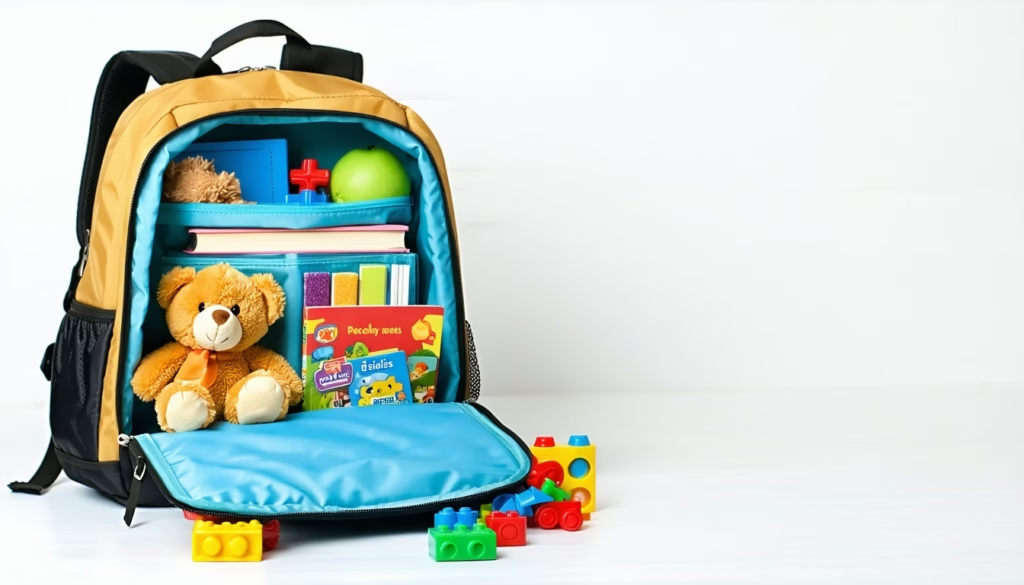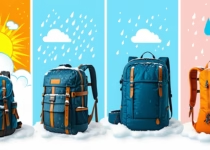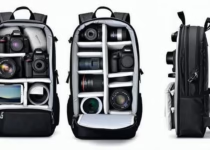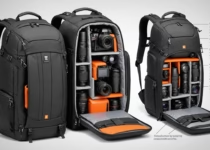How To Pack Kids Toys and Essentials Without Bulk

Figuring out how to pack kids toys and essentials without bulk can feel overwhelming. Between stuffed pals, action figures, and snack packs, your backpack might look ready to burst. But you don’t need a mini toy store strapped to your shoulders. In this step-by-step tutorial, you’ll learn simple ways to streamline little ones’ gear so everything fits neatly into a single pack.
By the end, you’ll have a lightweight, organized bag that keeps kids entertained on the go. Let’s dive in.
Step 1: Audit Toys And Essentials
First up, take stock of what you really need. Lay out every toy, book, and essential item—then ask yourself two questions:
- Does this item serve more than one purpose?
- Will my child use it for at least 15 minutes in a travel setting?
Next, sort into three piles:
- Must-have favorites
- Backup toys (small and easy to swap)
- Non-essentials (leave these at home)
Tip: Limit “must-have” to two or three items per child. You can always rotate playthings during longer trips.
Step 2: Select Multiuse Playthings
Why pack five toys when one will do the trick? Choose playthings that spark multiple activities:
- A small coloring book that doubles as a sticker scene
- A travel-sized puzzle that flips into a matching game
- Foldable plush figures that convert into finger puppets
These picks shrink your load and boost creativity. If you’re curious about creative backpack strategies, check out our guide on genius packing tricks for fitting everything in a backpack.
Step 3: Choose Compact Containers
Instead of tossing toys loose into the main compartment, pick slim, stackable boxes or pouches:
- Clear zip pouches for small figurines
- Silicone snack bags that hold both treats and tiny blocks
- Lightweight hard cases for delicate items, like mini magnifying glasses
Label each container with a number or icon so kids can grab what they need without rummaging. That way, you’ll avoid an avalanche of bits at the bottom of your pack.
Step 4: Organize With Packing Cubes
Packing cubes aren’t just for clothes—they’re game changers for toy storage too. Assign one cube per category:
- Art supplies (crayons, markers)
- Building toys (mini bricks, magnetic tiles)
- Comfort essentials (blanket, favorite plush)
You can learn more about efficient folding and cube use in our how to use packing cubes for ultimate luggage organization article. When everything’s zipped tight, your pack stays tidy and you’ll spot items at a glance.
Step 5: Use Compression Bags
Bulky blankets, plush friends, and extra clothes can eat up space fast. Compression bags let you squeeze air out so soft items take up minimal room. Here’s how:
- Layer items loosely inside the bag
- Seal the opening fully
- Roll or press down to force air out
A quick heads-up—don’t overstuff or force heavy objects inside, or the bag might tear. For more on this, see our guide on how to use compression bags to double suitcase space.
Step 6: Assign Backpack Zones
Your backpack likely has pockets, sleeves, and hidden compartments—use them wisely:
- Front pockets for travel docs and wipes
- Side mesh pockets for water bottles or crayons
- Main compartment divided by cubes and compression bags
Zone packing keeps bulky gear away from more fragile items, and little hands can learn which pocket holds snacks versus toys. Want extra space hacks? Peek at our best space-saving hacks for weekend trips with just a backpack.
Step 7: Secure Small Items
Tiny puzzle pieces and game tokens love to wander off. Keep them contained by:
- Taping game boxes shut or using rubber bands
- Storing parts in resealable snack bags
- Attaching small zip pouches with carabiner clips inside your bag
Bonus tip: Attach a keyring to zipper pulls so kids can wheel items free without spilling contents everywhere.
Step 8: Final Load Check
Before you zip up, do a quick weight and balance test:
- Lift the bag and walk around the room
- Ask your child to point out what they’ll grab first
- Shift cubes or pockets until the load feels comfy
If something’s too heavy or awkwardly placed, swap it out or move it to a different zone. You’ll end up with a streamlined pack that’s easy to carry and keeps boredom at bay.
FAQs
How many toys should I pack?
Aim for two or three “must-have” toys, plus one backup item per child. That way, boredom-breakers are still compact.
Can I use snack bags for toy storage?
Absolutely. Silicone or resealable snack bags are lightweight, clear, and keep small pieces in sight.
Are compression bags safe for plush toys?
Yes, as long as you don’t overfill them. Compress gently to protect delicate fabrics.
How do I keep game pieces from getting lost?
Store them in mini resealable bags, then clip each bag inside your pack with a carabiner.
Should I rotate toys mid-trip?
Rotating toys every day or two freshens play options without adding bulk up front.
What if my child wants more variety?
Offer one surprise item from home during your trip, then swap it out before you head home.
Can I pre-pack activity kits?
Definitely. Create themed kits (art, building, storytelling) in individual pouches for instant fun.
Conclusion
Packing kids’ toys and essentials without bulk is all about smart choices and efficient storage. By auditing what truly matters, choosing multiuse items, and leveraging packing cubes or compression bags, you’ll free up space and keep your backpack balanced. Ready to travel lighter? Grab your cubes, zip those bags, and enjoy more room for what really counts—making memories with your little ones.


